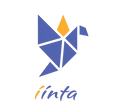Everything in the world communicates in some form or another. Animals make their sounds, like a cat who meows, purrs or hisses; dogs bark, growl, snarl and whimper; and whales click, whistle and make pulsed calls. Communication is something that’s universal, it’s the barriers of understanding said language that become a problem. Of course, humans are more sophisticated than a bark, meow or click.
In the realm of people, there are over 5,000 languages across the globe. Of course, some are generally outdated, like Latin, and have a sort of mystical aura surrounding them because of this lack of use. It should be noted it hasn’t entirely disappeared as it’s still used in the Vatican City and studied around the word as a classic language.
The English language has adapted dramatically over the last several centuries; as a common example you can take a look at Shakespeare’s writing (1590-1613):
“That which hath made them drunk hath made me bold;
What hath quench’d them hath given me fire.
Hark! Peace!
It was the owl that shriek’d, the fatal bellman.
Which gives the stern’st good-night. He is about it:
The doors are open; and the surfeited grooms
Do mock their charge with snores: I have drugg’d their possets,
That death and nature do content about them,
Whether they live or die.” — Macbeth, Lady Macbeth
